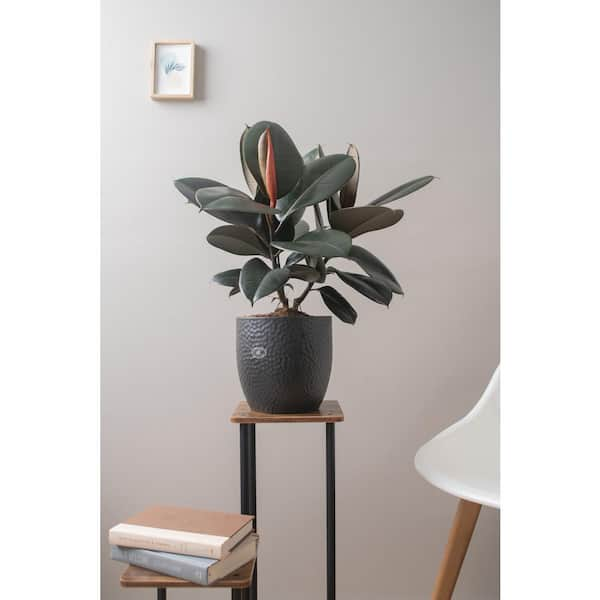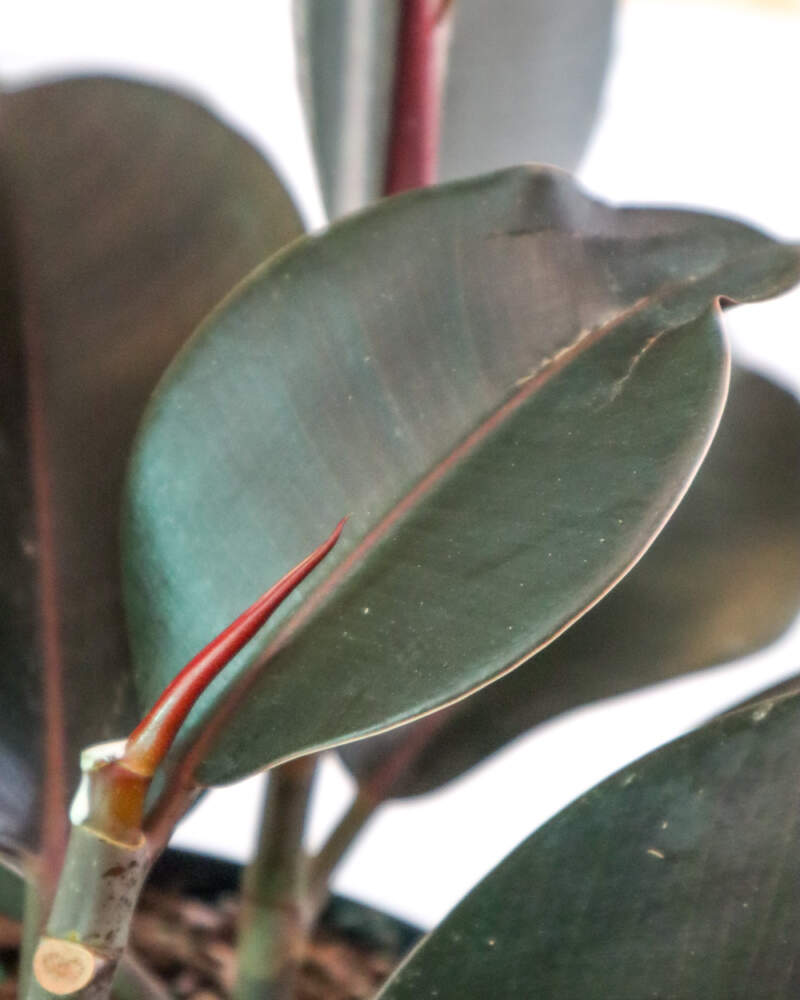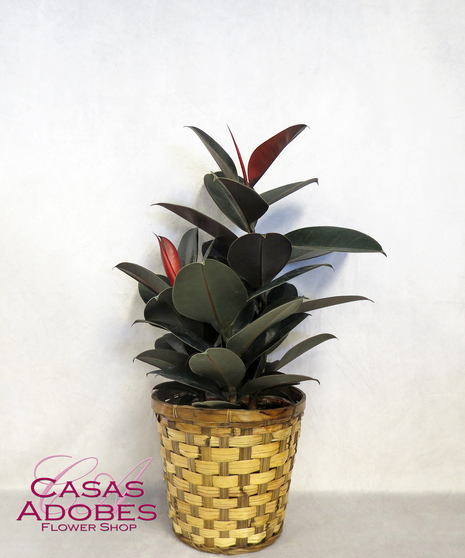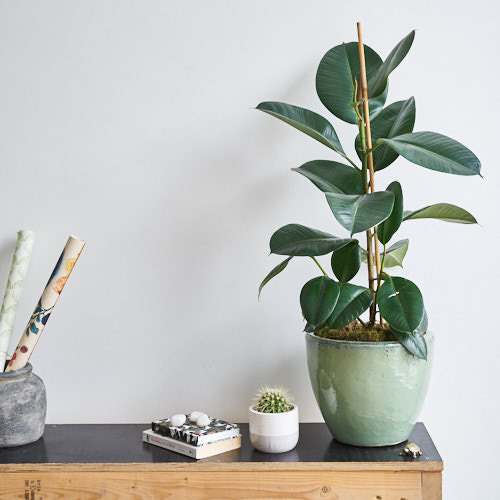Rubber plants, also known as Ficus elastica, are popular indoor plants known for their glossy, burgundy-colored leaves. They are easy to care for and can add a touch of elegance to any room with their unique dark foliage. However, like any houseplant, they require proper care and attention to thrive. In this article, we will discuss everything you need to know about taking care of your burgundy rubber plant, from its ideal growing conditions to common problems and solutions.
1. Choosing the Right Location

H4: Light Requirements
The burgundy rubber plant prefers bright, indirect light. Too much direct sunlight can cause its leaves to burn and turn yellow. On the other hand, too little light can result in leggy growth and smaller leaves. Placing your plant near a north or east-facing window is ideal, as it will receive enough light without being exposed to harsh, direct rays. If you have a south or west-facing window, consider using sheer curtains or placing your plant a few feet away from the window to filter the light.
H4: Temperature and Humidity
Rubber plants prefer warm and humid environments, similar to their natural habitat in tropical regions. Ideally, the temperature should be between 60-85°F (16-29°C), and humidity levels should be kept around 50% – 60%. If you live in a dry climate, consider using a humidifier or placing a tray of water near the plant to increase humidity. Misting the leaves regularly can also help provide moisture to the plant.
H4: Potting and Soil
When choosing a pot for your burgundy rubber plant, make sure it has drainage holes to prevent waterlogging. The plant’s roots do not like to sit in water for extended periods, and it can lead to root rot. A well-draining potting mix, such as a blend of peat moss, perlite, and vermiculite, is suitable for the plant. Avoid using heavy soils that hold onto moisture for too long.
2. Watering and Fertilizing

H4: Watering
The burgundy rubber plant prefers evenly moist soil but does not like to be constantly wet. A good rule of thumb is to water the plant when the top inch of soil feels dry to the touch. Check the soil regularly, especially during warmer months, as the plant will require more frequent watering. Overwatering can lead to root rot and cause the leaves to turn yellow and drop off. On the other hand, under-watering can result in wrinkled or droopy leaves. It’s also essential to use room temperature water, as cold water can shock the plant.
H4: Fertilizing
During the growing season (spring and summer), fertilize your burgundy rubber plant every two weeks with a balanced liquid fertilizer. Dilute the fertilizer to half strength to avoid burning the plant’s roots. During the fall and winter, reduce the frequency to once a month, as the plant enters its dormant phase. Always follow the instructions on the fertilizer package, as over-fertilizing can cause salt build-up in the soil, which can harm the plant.
H4: Pruning
Pruning is an essential aspect of caring for any houseplant, including the burgundy rubber plant. Regularly removing dead or damaged leaves helps promote new growth and keeps the plant healthy. You may also want to prune your plant to control its size and shape. Use clean and sharp pruning shears to make clean cuts, and avoid tearing the leaves. After pruning, wipe the blades with rubbing alcohol to prevent the spread of any diseases.
3. Common Pests and Diseases

H4: Pests
Like most plants, the burgundy rubber plant is susceptible to pests such as mealybugs, scale, and spider mites. These pests can cause damage to the leaves and weaken the plant, making it more prone to diseases. Regularly inspect your plant for any signs of infestation, such as webbing or sticky residue on the leaves. If you notice any pests, isolate the plant from other houseplants and treat with an organic insecticidal soap.
H4: Diseases
Overwatering and poor air circulation can lead to fungal diseases such as root rot and leaf spots. Ensure that your plant has proper drainage and enough space between other plants to promote air circulation. If you notice any signs of disease, remove the affected leaves and adjust your care routine to prevent further spread.
H4: Leaf Drop
Leaf drop can occur due to a variety of reasons, including over-watering, under-watering, temperature fluctuations, or lack of light. Inspect your plant to determine the cause and adjust your care routine accordingly. If the dropping leaves are towards the bottom of the plant, it could be a natural part of the plant’s growth cycle. However, if the entire plant seems to be dropping leaves, it may indicate an underlying issue that needs to be addressed.
4. Propagation

H4: Stem Cuttings
The burgundy rubber plant can be propagated through stem cuttings in water or soil. Choose a healthy stem with three to four leaves and cut just below a node (where the leaf meets the stem). Place the cutting in a jar of water, ensuring that the node is submerged. Change the water every few days to keep it fresh. After a few weeks, roots will start to grow, and you can transfer the cutting into a pot with soil.
H4: Air Layering
Another propagation method is air layering, which involves cutting a notch in the middle of a stem, applying rooting hormone, and wrapping it with damp sphagnum moss. After a few weeks, roots will emerge from the moss, and you can cut the stem below the new root growth and plant it in soil.
H4: Division
You can also propagate your burgundy rubber plant by dividing it into smaller sections. Carefully remove the plant from its pot and gently separate the stems and roots. Cut away any damaged or unhealthy parts and repot each section into individual pots.
5. Common FAQs about Burgundy Rubber Plant Care

H4: How often should I fertilize my burgundy rubber plant?
During the growing season (spring and summer), fertilize every two weeks with a balanced liquid fertilizer. Reduce the frequency to once a month during fall and winter.
H4: How do I know if my plant needs to be watered?
Check the top inch of soil, and if it feels dry to the touch, it’s time to water. Be sure not to over-water as it can lead to root rot.
H4: Can I keep my burgundy rubber plant outside?
Rubber plants prefer warm and humid environments, so they are best suited for indoor growing. Placing them outside in direct sunlight can cause damage to their leaves.
H4: How can I increase humidity for my plant?
If you live in a dry climate, consider using a humidifier or placing a tray of water near the plant to increase humidity. Misting the leaves regularly can also help provide moisture to the plant.
H4: What should I do if my plant has yellow leaves?
Yellow leaves can indicate various issues such as over-watering, under-watering, pests, or diseases. Inspect your plant and adjust your care routine accordingly to address the issue.
Conclusion
Burgundy rubber plants are stunning houseplants that can add color and beauty to any space. With proper care and attention, they can grow into thriving, full-grown trees. Remember to provide them with bright, indirect light, warm temperatures, and regular watering and fertilizing. Keep an eye out for pests and diseases and address any issues promptly. By following these tips, you can ensure your burgundy rubber plant remains healthy and vibrant for years to come.
